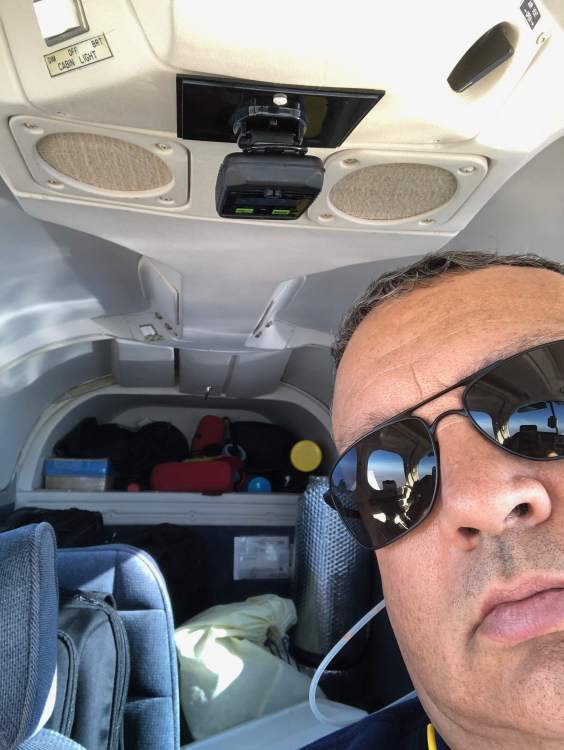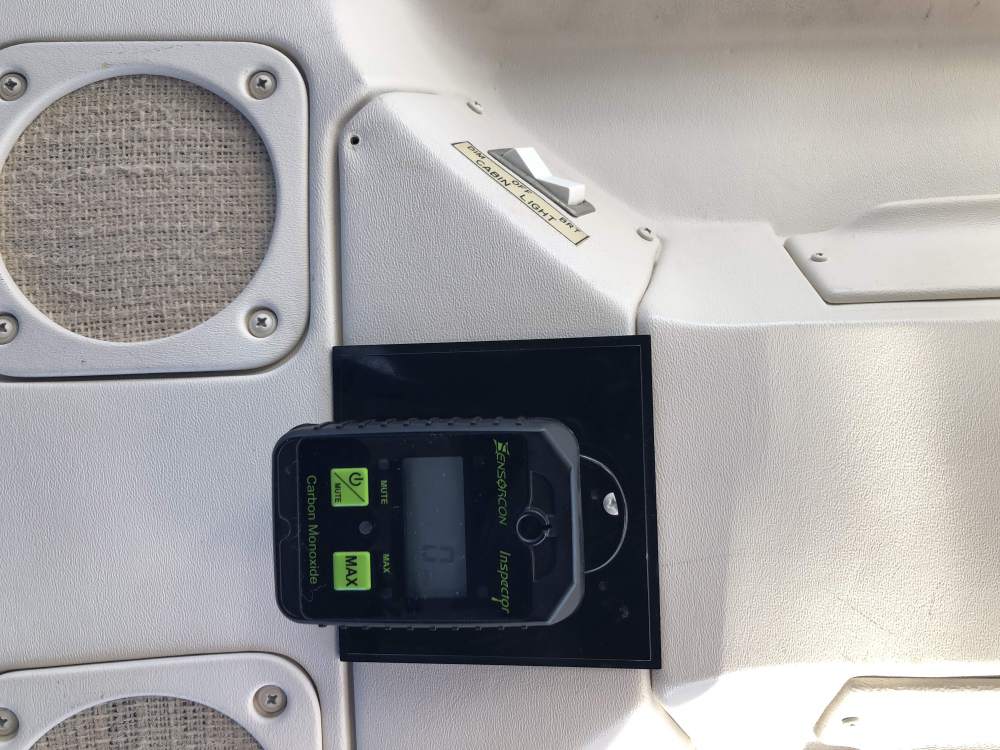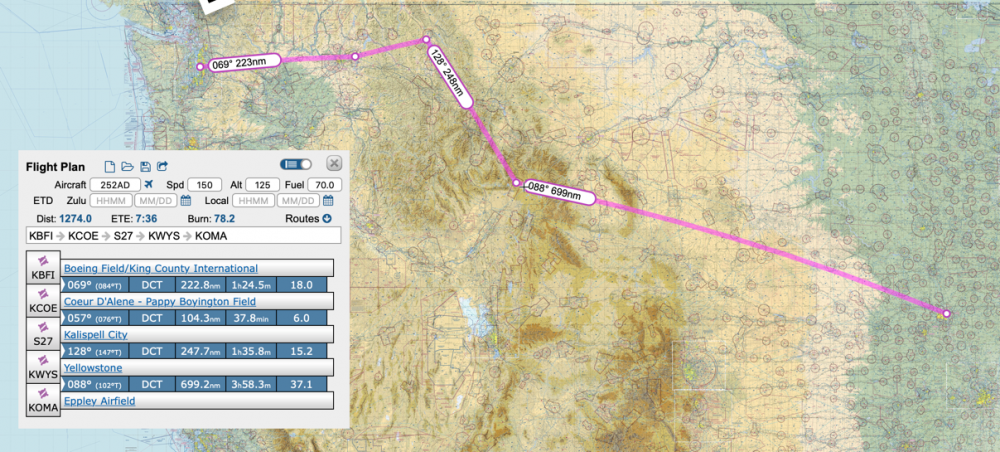
gsxrpilot
Basic Member-
Posts
9,055 -
Joined
-
Last visited
-
Days Won
315
Content Type
Profiles
Forums
Blogs
Gallery
Downloads
Media Demo
Events
Everything posted by gsxrpilot
-
I know! It's like a damn virus or something! I'm a pilot, a pilot's gotta fly... There's nothing I can do about that.
-
Has anyone actually had a GFC500 installed in a Mooney for $15K out the door?
-
You said it. Speed and efficiency is the benefit of the M20J. You can certainly spend more on fuel to carry more or to go faster. But for two people and luggage, it's really hard to beat a J. And even when compared to other airplanes with more useful load, compare the fuel required to get to your destination. You'll often find that the useful load is comparable when you learn how much fuel you can leave behind and still get to your destination. Example, my M20K only has 900lbs of useful load and carries 76 gal of gas. So the full fuel payload isn't very good at all. But full tanks give me almost 7 hours of range which can take me more than 1200nm easily. So for a 450nm trip, I can leave a lot of fuel behind and fill the cabin. Even an 800 nm trip won't require full tanks. Believe it or not, the Mooney cabin is wider than most other piston singles. That includes all the Cessna's, the Pipers, and even the V-tail Bo's. The difference is that you're sitting close to the floor, like a Vette or Porsche.
-
The other 4 seater to hold speed records at KIAH
gsxrpilot replied to wcb's topic in Miscellaneous Aviation Talk
Dean Siracusa over at KHYI, not far from Houston, is probably the leading authority in the country on the Meyers. So we'd see them regularly on the ramp at KHYI. In fact, the one you saw flying over Houston, likely had Dean in the left seat. Dean is also the founder of Flying Eyes Optics and one of the organizers and managers of the Black Rock City Airport that materializes every year on the playa in NW Nevada for BurningMan. -
Here's a good video showing proper formation positioning, good crisp communications, moving the formation to Echelon for the Overhead Break to land, an excellent break, and proper hot side/cold side landing. Three Mooneys and two Bonanza's. Thanks to Phil "Buzz" Verghese for the excellent camera work.
-
Where do you get these numbers? I'm just wondering because when I search the FAA Airman database, I find pilots listed who are relatives of mine who are either no longer flying, or have actually passed away. My grandfather is still listed in the database and he passed away in 1996.
-
Me too, at least it's the best one!
-
Yes, there is always a debrief after every flight. The debrief usually takes even longer than the original brief. We are religious about the brief and debrief. Cell phones off, everyone paying attention. If we don't have time to brief or debrief, we don't have time to fly formation. We also use standard briefing forms. So everything is written down during the brief, and notes are. made on the same sheet during the debrief. Bucko, who is our designated Mooney Lead and Flight Ops Director, usually shows up to a flight with the briefing sheet already filled out for everyone. This way pilots are listening to everything during the brief and not busy writing down frequency numbers and other misc stuff. But everything is written down and documented before and after. I have a file of briefing sheets from hundreds of formation flights. It's interesting to go back through and see how I've improved and how we've improved as a group over the last five years or so. The debrief is organized with each pilot and observer given time to speak in turn. The debrief starts with discussing any "Safety of Flight" issues. Usually there are none, but it is always discussed. Then we talk through each phase of the exercise from the initial engine start all the way through to engine shut down. What was good, what could be better, what was bad, where was there confusion, etc. It's nice to have a safety pilot riding along as they are often making notes during the flight to discuss during the debrief. The Air Force guys who ride with us as Safety pilots, always seem to have the most detailed notes for the debrief. Obviously the POC in each airplane is flying 100% and not writing anything down during the flight. Lessons learned are noted, written down, and incorporated into subsequent flights. If often fly with the same group and any notes any of us has taken from previous formation flight debriefs are raised in the brief before the next flight. We almost always have a whiteboard for both the brief and debrief. As an engineer you'll undoubtedly recognize the usefulness of a whiteboard.
-
IMHO... if I answer #1, I'm a fool. But if I answer #2 I should stay on the ground. I think it's somewhere in the middle. It's a big sky, the vast majority of pilots are well trained, proficient, and professional. None of them are "trying to kill me." But I should be alert and aware of what's around me. But then both survey options are very relative and subjective and therefore either answer could be acceptable under various interpretations. BTW... when on a motorcycle, I don't believe anyone is "trying to kill me" but rather I assume they can't see me. If I ride as if I'm invisible, then it's on me not to get hit. And I don't have bad feelings toward the car that swerves into my lane. They didn't see me. When I get cut off in the pattern, I don't ascribe malice to the other pilot, rather he didn't see me. So I should fly in a way that ensures I can't be hit.
- 38 replies
-
- 11
-

-
That's certainly a good start. But did you have an instructor/safety pilot with you in the plane? The FFI, FAST, and US Air Force formation learning process has new pilots starting in the number 2 position with an experienced/carded pilot flying the lead ship and an instructor/safety pilot riding in the right seat with the new #2 wingman. We typically start the process with the new formation pilot riding along in the #2 ship to see what it all looks like from that position. The formation would include an experienced Lead and experienced #2. I like your analogy of the dangerous nature of riding a motorcycle in Houston. But from my experience with both, I'd say it closer to riding a track day. Not danger free, but certainly safer when all pilots have trained to the same standard, have been through an extensive brief immediately prior to the flight. When we're just out for practice, the brief usually takes an hour, for a performance, clinic, Oshkosh, etc. the brief is even longer. One slightly concerning note (but I might have mis-understood), is about briefing the overhead break to ensure a Left turn? While EVERYTHING is properly discussed in the brief, the direction of the overhead break to landing is often assigned by ATC while on Final or typically called "Initial". But one thing is sure and every formation pilot would know well, is that a break can only happen from an Echelon formation, (all wingmen on the same side, right or left, of lead) and the break is always away from the formation. So if the formation is Lead on the left, with 2,3,4 to the right, then the break is to the left. If the formation is Lead on the right with 4,3,2 to the left, then the break has to be to the right. At a towered field we might ask tower for a left break as the formation is lined up Echelon right. But if tower says expect a right break, then we'll cross under the formation to the left to allow for the right break. Regardless, a break can never happen towards the formation, and a break can never happen from "finger tip" or "parade" formation. This was the case on Saturday when I flew formation with my friend Whitey, both of us are carded FAST pilots. We were Echelon Left, expecting a right break. At a position of "5 mile Initial", tower told us to switch to a left break. So we immediately crossed under for an Echelon Right and then executed a 5 sec break at the "numbers" (approach end of the runway). Overhead Break to Land, as you said, is a lot of fun.
-
Whoever your instructor is, isn't instructing anything if you're flying as Lead and he's on your wing. Get some proper formation training, qualify for either a FAST or FFI Wing Card, in your Mooney, and then report back. Until then, you don't know what you're talking about.
-
First thing for me is that I never count my various subscriptions. ForeFlight, etc. I'd do that whether I owned an airplane or not, so I don't count it. Hangar - $3000/year Insurance - $800/year Annuals - $2000/year With my M20C I figured $10,000 a year allowed me to fly as much as I wanted to fly. With the M20K, I'm spending closer to $20K a year, but flying a lot more.
-
Again, your ignorance of formation flying is showing. Have you done any station keeping yet? Let's see how you do in the same position on your second try. Or maybe I missed the sarcasm/joking in your post...
-
Yep, ADSB should be on the list. Back in 2014 when I put the list together, there was still time to look at options. Buying a plane today, it should be there. I'll also agree that you won't find everything on the list. That's why the order of the list is important. I worked to find the Mooney that got as far down the list as possible. It's also important to look at the cost to add/upgrade the bits on the list that are missing. And engine monitor and ADSB can be relatively inexpensive to add. An autopilot and WAAS GPS are not inexpensive. On older Mooneys such as C's and E's, my spreadsheet showed that every additional dollar I spent on the purchase price to buy a plane with the upgrades already done, I saved $4 of upgrade costs. In other words, buy the best example you can find. It will be the cheapest in the long run.
-
You're getting good advice in this thread... I made a wish list when looking for my first Mooney. I first I ordered the list by what was important to me, and the later reordered it to account for the cost of adding a particular item later. An autopilot is just VERY expensive to install later. We keep hearing of affordable autopilots right on the verge of availability, but as of today, there is nothing available. So get a plane that has one already. Another example is an engine monitor. I wouldn't own a plane without one, but it's pretty far down the list just because it's a relatively inexpensive thing to add later. Here was my list. I just went as far down the list as I could afford. No corrosion Regularly flown/flying/currently in annual Engine between 500 and 1000 SMOH IFR Certified Autopilot/altitude hold WAAS GPS Standard 6-pack panel HSI 2nd Nav/Comm no AD prop 1 piece windshield Tank bladders or re-sealed tanks Engine monitor Exterior paint Interior condition 2 blade prop
-
Wondering the same thing... I'd like to just pull the unit and send it in.
-
Maybe because those of us involved realize the amount of work, phone calls, people driving to Oshkosh to meet with EAA, conference calls with MSN Tower, OSH Tower, FAA, and EAA ground, etc. etc. starting on Wednesday prior. Weather happens, but it's the work, planning, and contingencies that make the difference. Who was it that said, "the harder you work the luckier you get." The high spot in the N40 was ours because we had people on the ground working with EAA in advance of the storms on Saturday to lay claim to it in anticipation of wet conditions. We got in Sunday morning in spite of the entire N40 being closed to parking because of the successful negotiations and communication between the Caravan leadership and all the other parties including OSH Tower and EAA Ground. This is the second year in a row that the Mooney Caravan has arrived to Oshkosh and the B2OSH group hasn't. There's no competition here and the B2OSH leadership had a meeting with the Caravan leadership last year and again this year to compare notes and hopefully learn from each other. Obviously B2OSH is more than twice the number of aircraft and that adds additional complexity to the operation. Those of us who were there and involved, want to see credit go to the team that worked so hard to make it happen, and not just to Lady Luck and the Weather Gods.
-
2 Mooneys Touch Mid-Air Inbound to OSH?
gsxrpilot replied to mooneyflyer's topic in General Mooney Talk
-
I used a GoPro box top and some existing screws in the headliner. This is a picture of my SensorCon CO detector in the mount, but it also holds a GoPro camera and gives that same POV.
-
East Coaster looking for MTN flying tips
gsxrpilot replied to J0nathan225's topic in Mooney Safety & Accident Discussion
I've done this route in an M20C. It was easy, all under 12,500. No O2. Full disclosure by KCOE I was thinking of selling the C and upgrading. By KWYS I'd convinced my wife that we should sell the C. And by KOMA it was sold. Then we went and bought a 252. -
If you have to ask...
-
Yeah, it's not much fun in bumpy air. We usually try to go out early in the morning, or sometimes climbing above a layer will yield smooth air. Then it's a lot of fun. From the standpoint of effort, it's still a lot of work. I'd be soaked in sweat even on a cool day, after 45 min of holding position when I was getting into it. It's gotten easier now, but an hour is still a lot of effort. But I do enjoy it!
-
Be careful, it's a lot of fun and just a little addicting. Will you be flying formation in your Mooney or in a different type of plane? I might have misunderstood your comment.
-
I'd like to see it when it gets back. I'm on the schedule but still a month or so out.






